Porsche 718 Boxster & 718 Cayman (982) – The Story
The Evolution Continues
982 Story / 982 Timeline / 982 Model Guides / MY Differences / Image Gallery / Specs / Misc Data / FAQs / News
Type: 982
Generation: Fourth Generation
Manufacturer: Porsche AG
Production Years: 2016 - Present
Model Years: 2017 - Present
Body Style: 2-Door Roaster
Layout: Rear mid-engine, RWD
Engines: 2.0 L MA2.2 turbo flat-4, 2.5 L MA2.22 turbo flat-4, 4.0 L MDG naturally aspirated flat-6
Transmission: 6-speed manual, 7-speed PDK
Official photos: Boxster 2016 Jan 27, Cayman 2016 Apr 24, GTS 4-cylinder 2017 Oct 18, GTS 6-cylinder 2020 Jan 16
Premiere: Boxster March 1 2016 at Geneva motor show press day, Cayman April 25 2016 at Auto China
Market launch: Boxster Apr 30 2016, GTS 4-cylinder December 2017, GTS 6-cylinder March 2020
Ever-stringent government fuel economy and CO2 emissions standards forced Porsche to downsize and turbocharge its entire range of engines. This meant that the marketing department leaned on the flat-four heritage of the 550 Spyder and 718 race cars, dubbing the internally-designated 982 Boxster and Cayman models as the 718.
The MA2-based flat-fours of the base and S versions of the Boxster had more varied specifications than any of their predecessors. The 2.0-liter MA2/20 of the base model had a turbocharger with a conventional internal wastegate for boost control, while the 2.5-liter, 350-hp MA2/22 of the Boxster S had a variable turbine geometry turbocharger in addition to a conventional internal wastegate to reduce exhaust backpressure.
Porsche fans who missed the howl of a flat-six in a new mid-engined roadster collectively rejoiced with the introduction of the 2019 Boxster Spyder, which featured an MA2-derived, naturally aspirated 4.0-liter flat-six, which generated 414 hp and revved to 8,000 rpm. This drivetrain reverted to the three-point mounting system of previous six-cylinder Boxsters.
Porsche chassis engineers always find incremental improvements between generations of model lines, and the 982 was no exception. While the 982 was an evolution of the 981 design and shared most of its body and chassis construction and layout with its predecessor, there were optimizations in every area of the suspension system to improve response and feel. The 982 retained the three-link strut rear suspension design, which has been cited by the erstwhile Porsche engineer and 718/982 project manager August. Achleitner as one of the main engineering reasons that Porsche has never produced a true 911 rival based on the current mid-engine platform-there simply isn't room for a proper multi-link rear suspension design.
The 982 generation launched in 2016 and remains in production as of 2025, marking a major shift in the Boxster’s identity—most notably with the move from naturally aspirated flat-sixes to turbocharged flat-fours in most models.
Porsche introduced the 718 Boxster and 718 Boxster S, both featuring turbocharged flat-four engines for the first time.
Base model: 2.0L turbocharged flat-four with 300 hp
S model: 2.5L turbocharged flat-four with 350 hp
The exterior design was subtly sharpened from the 981, with new front and rear fascias, slimmer LED lights, and updated side air intakes.
The interior remained similar to the 981 but featured updated infotainment systems and minor trim revisions.
Transmission options: 6-speed manual or 7-speed PDK.
First full production year.
No major mechanical or visual changes from launch year.
Introduced optional Porsche Connect services for navigation and smartphone integration.
Special trims and customization expanded.
The 718 Boxster GTS was introduced, featuring a 2.5L turbo flat-four with 365 hp, enhanced suspension (standard PASM and Sport Chrono), and blacked-out design elements.
GTS served as a higher-performance alternative to the S, offering sharper dynamics and a more aggressive aesthetic.
Minor tech and infotainment updates continued, including enhancements to PCM (Porsche Communication Management).
Continued refinement of options and standard equipment.
The GTS remained the top-performing variant with growing popularity.
Introduction of more driver-assist features as options (such as adaptive cruise control and lane change assist).
A major moment: Porsche introduced the 718 Boxster Spyder, now part of the 982 generation, with a naturally aspirated 4.0L flat-six producing 414 hp—shared with the 718 Cayman GT4.
Also added: the Boxster GTS 4.0, which also used the new 4.0L NA flat-six but tuned to 394 hp.
These models marked a return to high-revving six-cylinder engines, addressing criticism of the earlier turbo-four models.
The Spyder was manual-only at launch, while the GTS 4.0 could be had with either manual or PDK.
PDK option introduced for both the Spyder and GTS 4.0, broadening appeal and performance accessibility.
Minor updates to connectivity features, with improved Apple CarPlay integration.
Porsche expanded personalization options across the lineup.
No major changes to powertrains or models.
Interior technology updates continued incrementally.
The 718 Style Edition was introduced, based on the base 718 Boxster, featuring unique colors, contrast detailing, and exclusive badging—essentially a visual enhancement package.
Continued refinement of standard equipment depending on market and trim.
No major changes reported.
Porsche continued offering the full lineup: Base, S, GTS 4.0, and Spyder.
Still considered one of the most complete Boxster generations with choices spanning from turbo fours to naturally aspirated sixes.
As of early 2025, the 982 generation remains in production, with speculation mounting about an all-electric successor.
The Boxster Spyder RS was introduced (technically under the Cayman/Boxster GT lineup), featuring the 4.0L GT3-derived engine with 493 hp, PDK only, and extreme lightweight construction. It's the most powerful Boxster ever made and the swan song of the combustion Boxster.
The move to turbocharged four-cylinder engines was upsetting to some Porsche fans, but the performance numbers proved to support it as the right decision. Power was up, torque was up (a lot) and the improvements on the road compared to the 981 Boxsters were substantial.
The Porsche 718 Boxster (982) introduced in 2016 retained the overall silhouette of the 981 but featured sharper, more angular styling, redesigned front and rear fascias, and slimmer LED lighting elements, giving it a more aggressive, modern look. The biggest change was under the hood, where Porsche replaced the naturally aspirated flat-six with turbocharged flat-four engines, marking a significant shift in character and sound.

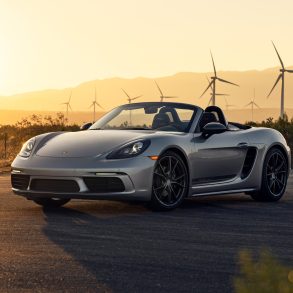
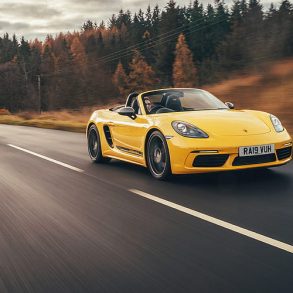
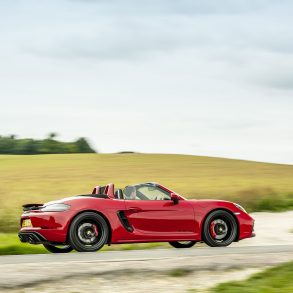
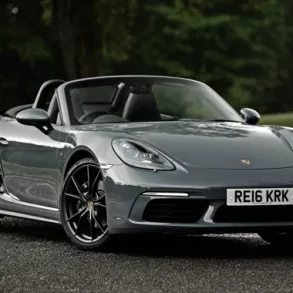
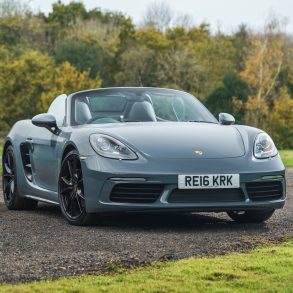
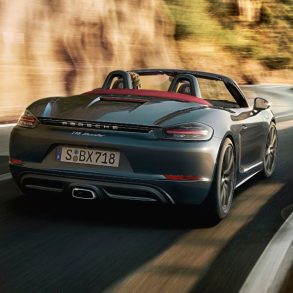
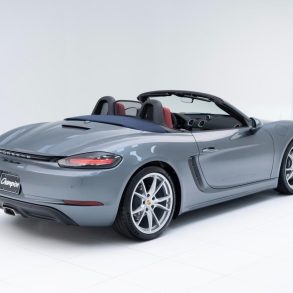
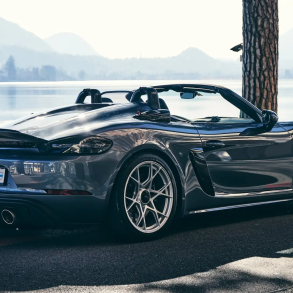
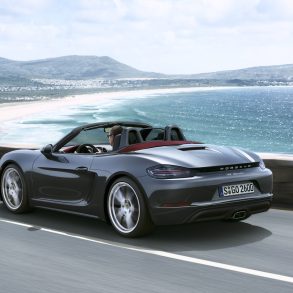
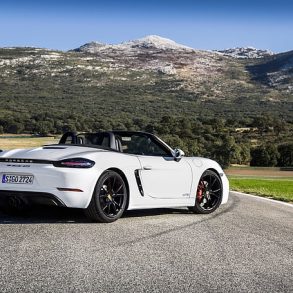
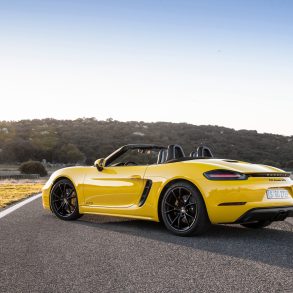
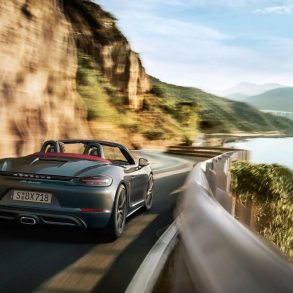

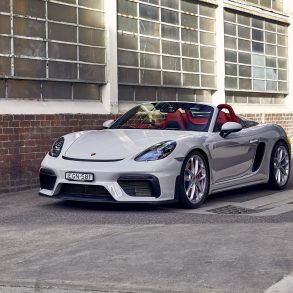
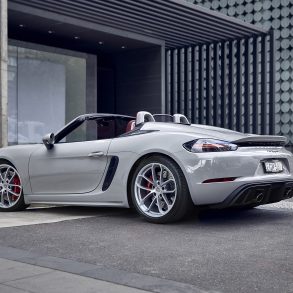
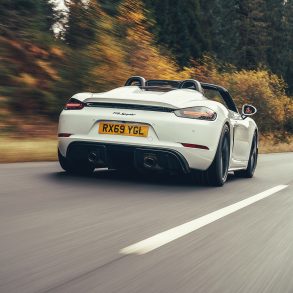
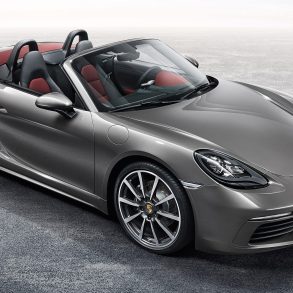
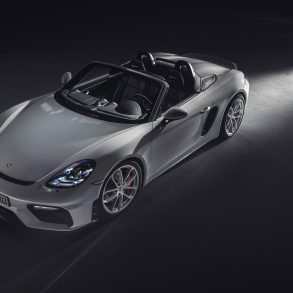
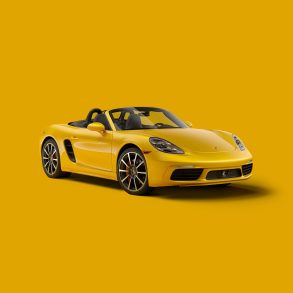
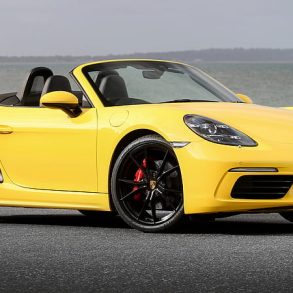
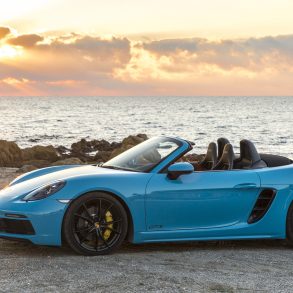
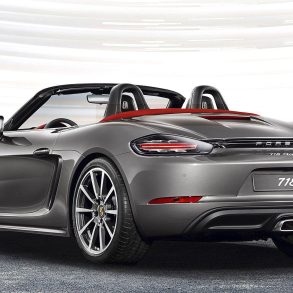
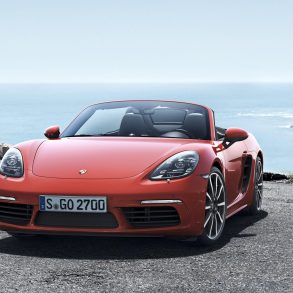
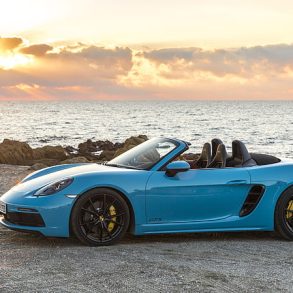
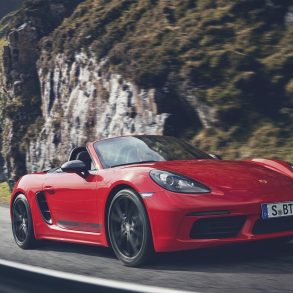
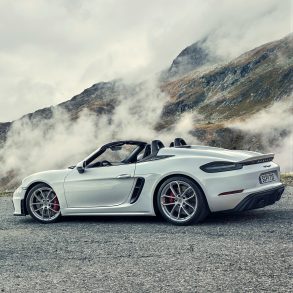
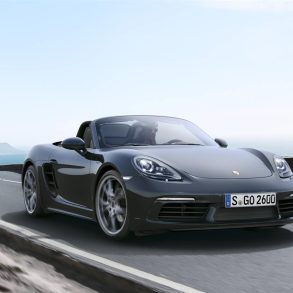
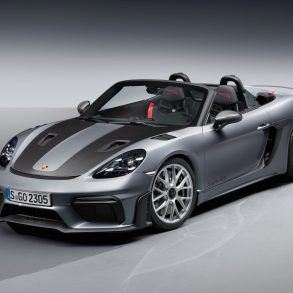

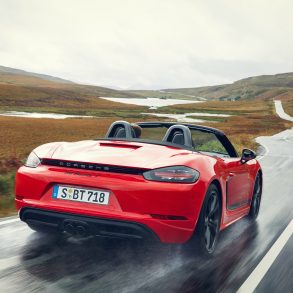
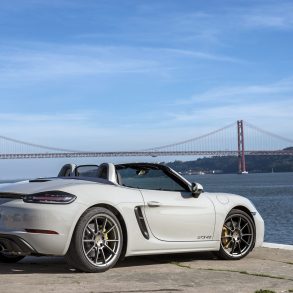
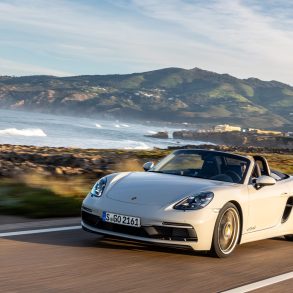
The video reviews below show you how strongly people felt about the cars. Enjoy our interactive galleries and awesome videos of the third generation 982 Porsche 718 Boxster.
We dig into some of the data surrounding the fourth generation Porsche 718 Boxster, including production numbers, specifications, chassis numbers, sales brochures, equipment codes, maintenance schedules, common problems, colors and much more.
The fourth-generation Porsche 718 Boxster, internally designated as the 982 series, was designed by Peter Varga in 2015. Varga's work introduced a refreshed aesthetic while maintaining the classic mid-engine proportions that define the Boxster lineage. His design incorporated sharper lines, reworked headlights, and a distinctive rear light bar that connects the taillights, giving the car a more modern and aggressive appearance.
The fourth-generation Porsche Boxster, known internally as the 982 and marketed under the 718 Boxster name, was introduced for the 2017 model year and remains in production as of 2025.
This generation debuted in early 2016 and brought with it a major shift in the Boxster’s character: the switch from naturally aspirated flat-six engines to turbocharged flat-four engines. The 982 Boxster lineup has evolved over time with updates and new variants like the 718 Boxster GTS, Spyder, and 25 Years edition.
A significant mid-cycle refresh arrived for the 2021 model year, particularly refining the GTS 4.0 and Spyder offerings, though the core design and platform remained consistent. As of 2025, the 982 generation is still the current Boxster generation, with no announced successor yet, though speculation suggests an electric or hybrid future lies ahead.
The difference between the second-generation Porsche Boxster (987) and the third-generation Porsche Boxster (981) is substantial, reflecting a major leap in design, performance, and overall refinement. While both retain the mid-engine, rear-wheel-drive layout and Porsche’s signature roadster DNA, the 981 is a significantly more modern and capable machine across nearly every dimension.
One of the most noticeable differences lies in the design. The 987, which was produced from 2005 to 2012, carried forward the rounded, softer styling cues of the original Boxster (986) with evolutionary changes—slightly wider fenders, a more aggressive front fascia, and a more refined interior, especially after the 2009 facelift (987.2). In contrast, the 981, introduced in 2012, took a big step toward a sharper, more muscular aesthetic. It features wider tracks, a longer wheelbase, more sculpted side intakes, and styling heavily inspired by the Carrera GT and 991-generation 911. The interior of the 981 also adopted the “rising” center console design from the Panamera, giving the cabin a more upscale and driver-focused feel.
Mechanically, the leap is even more profound. The 987.1 models (2005–2008) used M97 engines, which were prone to intermediate shaft (IMS) bearing failures—an issue resolved in the 987.2 models (2009–2012) with the introduction of direct fuel injection and the updated 9A1 flat-six engines. The 981 continued with the 9A1 engines, offering both improved power and efficiency while maintaining the signature naturally aspirated character. In addition, the 981 platform benefited from significant weight savings due to aluminum construction and boasted a stiffer chassis, better suspension geometry, and improved electric power steering.
From a driving perspective, the 981 offers more precision, composure, and refinement. It is both faster and more comfortable, bridging the gap between the Boxster and the 911 more than ever before. For buyers, the 981 is often seen as a “sweet spot” in the Boxster lineup: it retains the naturally aspirated engines and excellent driver feedback while adopting more modern aesthetics, tech, and build quality. The 987, especially in its 987.2 guise, remains a rewarding and more analog experience, but it lacks the polish and presence of its successor.
The fourth-generation Porsche 718 Boxster (982) is impressively quick across its model range, thanks to turbocharged powertrains and, later, the return of naturally aspirated flat-sixes in higher trims. Here's how fast it is, depending on the variant:
718 Boxster (Base): Powered by a 2.0-liter turbocharged flat-four producing 300 hp and 280 lb-ft of torque, the base model accelerates from 0 to 60 mph in around 4.9 seconds with the manual transmission, and 4.5 seconds with the PDK and Sport Chrono package. Top speed is about 170 mph.
718 Boxster S: Equipped with a 2.5-liter turbo flat-four making 350 hp and 309 lb-ft of torque, it hits 0–60 mph in as little as 4.0 seconds with PDK and Sport Chrono. Top speed climbs to 177 mph.
718 Boxster GTS 2.5 (2018–2019): Shares the 2.5-liter engine with the S but tuned to 365 hp, trimming the 0–60 time to 3.9 seconds (PDK with Sport Chrono). Top speed is around 180 mph.
718 Boxster GTS 4.0 (2020–present): Reintroduces the naturally aspirated 4.0-liter flat-six from the Cayman GT4, with 394 hp and a redline of 7,800 rpm. It accelerates from 0–60 in 4.3 seconds (manual) or 3.8 seconds (PDK with Sport Chrono). Top speed is 182 mph.
718 Spyder (2020–present): Also uses the 4.0-liter six-cylinder, tuned similarly to the GTS 4.0. It reaches 0–60 in 3.7 seconds (PDK) and has a top speed of 187 mph, making it the fastest and most capable Boxster ever made.
The “best” year for the fourth-generation Porsche 718 Boxster (982) depends on what you value most—performance, engine sound, technology, or value—but several standout years rise above the rest depending on your priorities:
2020–2024 (GTS 4.0 and Spyder models) are widely regarded as the sweet spot for enthusiasts. These years mark the return of Porsche’s beloved naturally aspirated 4.0-liter flat-six engine, introduced in both the 718 Boxster GTS 4.0 and the 718 Spyder. The engine delivers a rich, linear powerband and a soulful exhaust note—addressing the biggest criticism of earlier turbocharged 718 models: their lack of aural character. These variants also come with refined chassis tuning and superb standard equipment, making them the most engaging and rewarding to drive.
If you're seeking value and everyday usability, the 2018–2019 model years offer a great balance. By this point, Porsche had resolved some early production teething issues from the 2017 launch, and the 718 Boxster and Boxster S with turbocharged flat-fours were well sorted. The GTS 2.5 from these years also offers more performance than the S with added visual and dynamic upgrades.
The 2017 model year, while significant as the launch year of the 718 series, tends to be less desirable due to being the earliest iteration of the turbocharged platform. It also lacked some of the optional refinements and tuning updates introduced later. However, it may offer the best prices if budget is a primary concern.
Ultimately, if you're a purist or collector, 2021–2024 GTS 4.0 or Spyder models are the pinnacle of the 982 Boxster lineup. But for many buyers, a well-equipped 2018–2019 S or GTS 2.5 may strike the perfect blend of price, performance, and usability.
Join Our Porsche Community
Sign up for our weekly Porsche newsletter. The latest Porsche news, rumors, reviews and more delivered to your inbox. Cool Porsche stuff perfect for the flat-six obsessed.